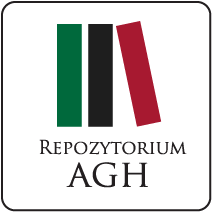Repozytorium AGH
Repozytorium instytucjonalne Akademii Górniczo-Hutniczej im. Stanisława Staszica w Krakowie
Zbiory i Kolekcje
Publikacje i materiały zdeponowane w Repozytorium AGH.
Ostatnie wpływy
Artykuł
Tylko metadane
Uwarunkowania geologiczno-inżynierskie wznowienia budowy Elektrowni Szczytowo-Pompowej »MŁOTY« koło Bystrzycy Kłodzkiej
(2008) Kowalski, Edward; Rotkegel, Marek; Stałęga, Stanisław
Underground mining operations of the construction of Pumped-Storage Power Station »Młoty« were launched in 70's of the 20th century. About 2 km of underground excavation was done than, including partially accomplishment of 3 pressure adits, opening adit, main adit and passby adit. Now, after over 30 years of freezing, a construction resuming is considered. Authors of this paper have done the necessary investigations of the technical state of excavation and characterise the geological and mining conditions of freezing or resuming the construction of power station »Młoty«.
Artykuł
Tylko metadane
Badania parametrów zagęszczalności gruboziarnistego kruszywa z żużla wielkopiecowego
(Wydawnictwa AGH, 2008) Zydroń, Tymoteusz; Zawisza, Eugeniusz; Macałka, Andrzej; Jantos, Piotr
Article presents results of compactibility parameters tests of furnace slag aggregate of granulation of 0-31,5 mm from Slag Recycling Sp. z o.o. in Krakow. Comparison of compactibility methods was the aim of the work. Two compaction methods were used in the tests: ramming (tamping) and vibration. Tamping tests were carried out in standard (V/cyl = 2,2 $dm^{3}$) and middle-sized (V/cyl = 9,8 $dm^{3}$) Proctor apparatus using standard and modified compaction energy. Vibration tests were conducted on a Ve-Be vibration table with cylinder of the volume of 8,1 $dm^{3}$. As a result of the tests, the influence of time, load and the thickness of the compacted layers on compactibility of the aggregate were determined.
Artykuł
Tylko metadane
Wpływ stabilizacji cementem lub silmentem na wytrzymałość i mrozoodporność gruntu pylastego
(Wydawnictwa AGH, 2008) Zawisza, Eugeniusz; Gruchot, Andrzej Tadeusz
Results of the tests of stabilization of a silty soil with cement and silment were presented in the paper. Compression strength of the silt with 3, 6 and 10% addition of stabilizer after 7, 14, 28 and 42 days was determined. Compression strength was also determined for the samples with stabilizer after 28 days treating with cycles of freezing at the temperature of - 23 degrees of Celsius and thawing in water. The obtained values of compression strength and frost resistance index were analysed in relation to the values required for the materials used in road building.
Artykuł
Tylko metadane
Modelowanie wpływu zaburzeń tektonicznych na drgania stropu w górotworze uwarstwionym
(Wydawnictwa AGH, 2008) Walaszczyk, Jan; Wiewiórka, Dariusz
Phenomenon of dynamic relieving present in paper and methodic of numerical modeling this problem. Numerical model of group of room present in interaction area of big fault. Diagrams in result of account received displacement, velocities and acceleration in chosen points of models. It implement analysis about diagrams of changes of tensions in pillars and enclosing of them. Numeric errors in digital filtration of result use eliminating.
Artykuł
Tylko metadane
Zmienna uszkodzenia D dla skał poddanych próbom jednoosiowego rozciągania
(Wydawnictwa AGH, 2008) Tomiczek, Krzysztof
On basis of Lemaitre and Ju and Xie theories a new damage variables D are proposed to measure the damage and evolution of failure of rocks under uniaxial tension. The damage D was determined by load and unload stress - strain characteristics of cylindrical sandstones and granite samples under direct tension condition. Generally, the damage D of rocks under tension was lower than critical value (D< 1), when the load amplitude reached ultimate strength. The results illustrated also that the tangent modulus E, has determinative influence of D.

